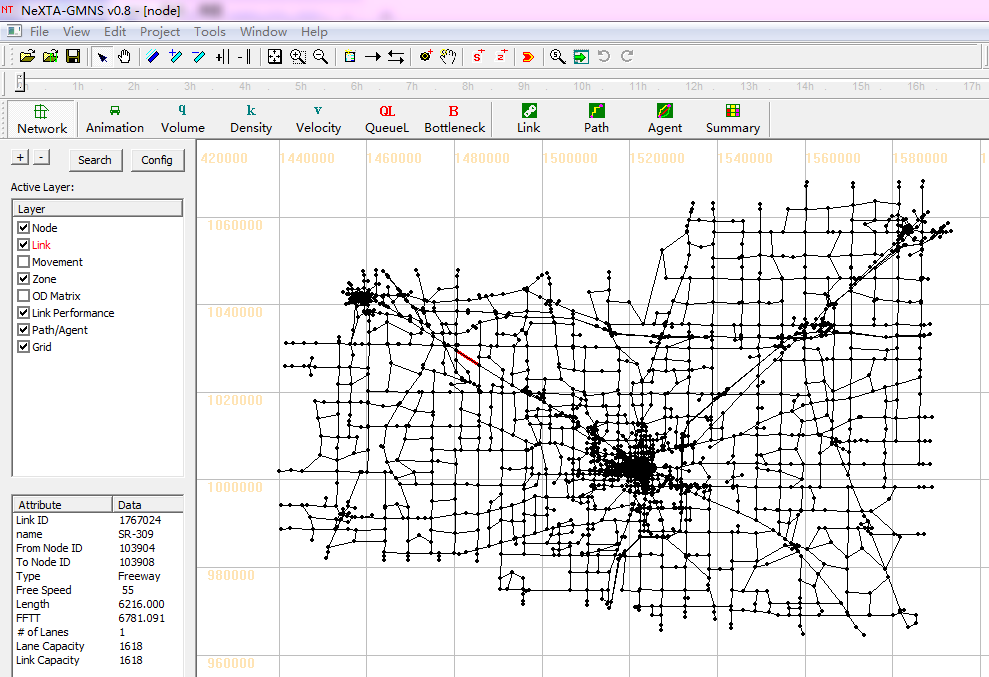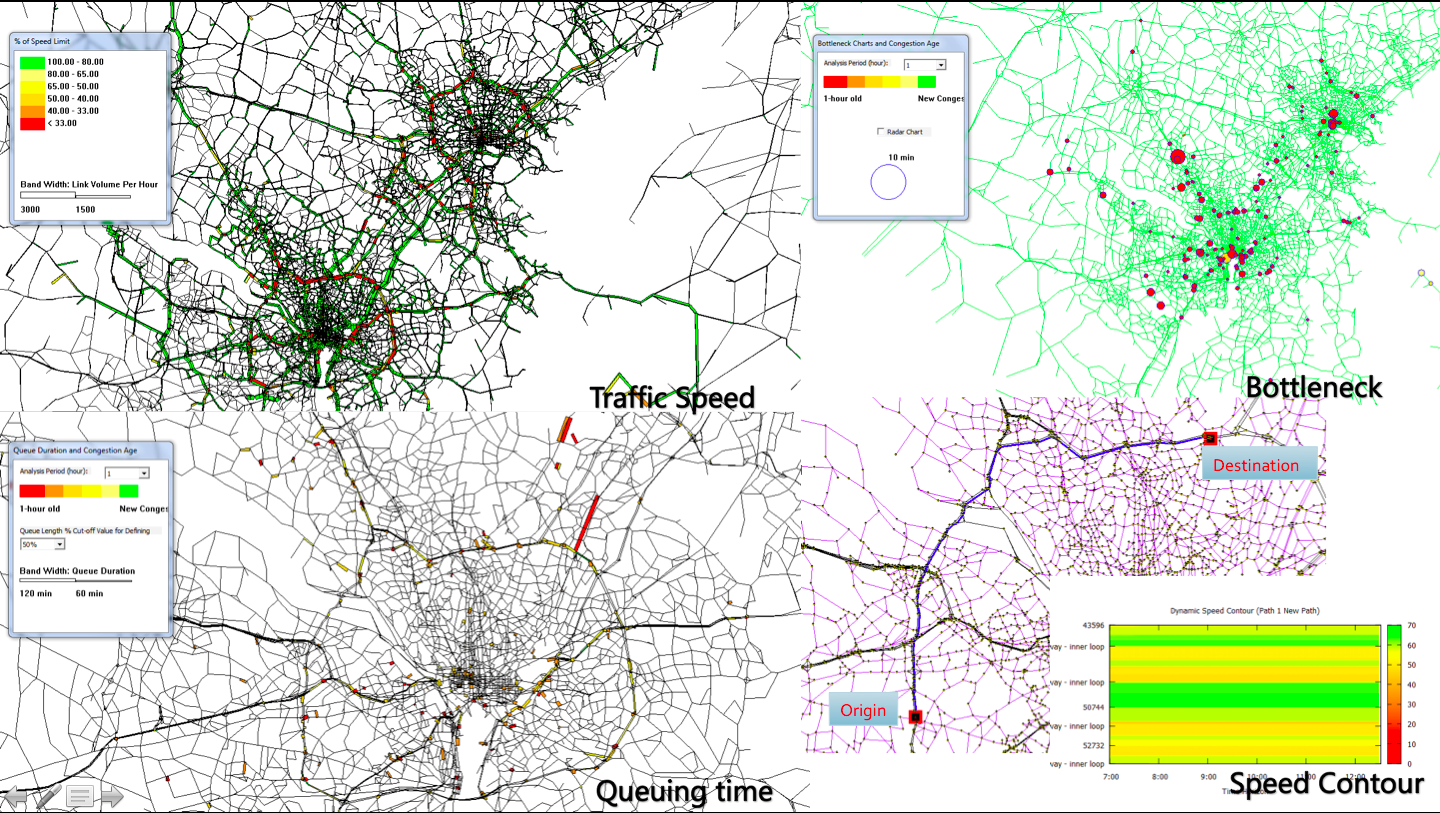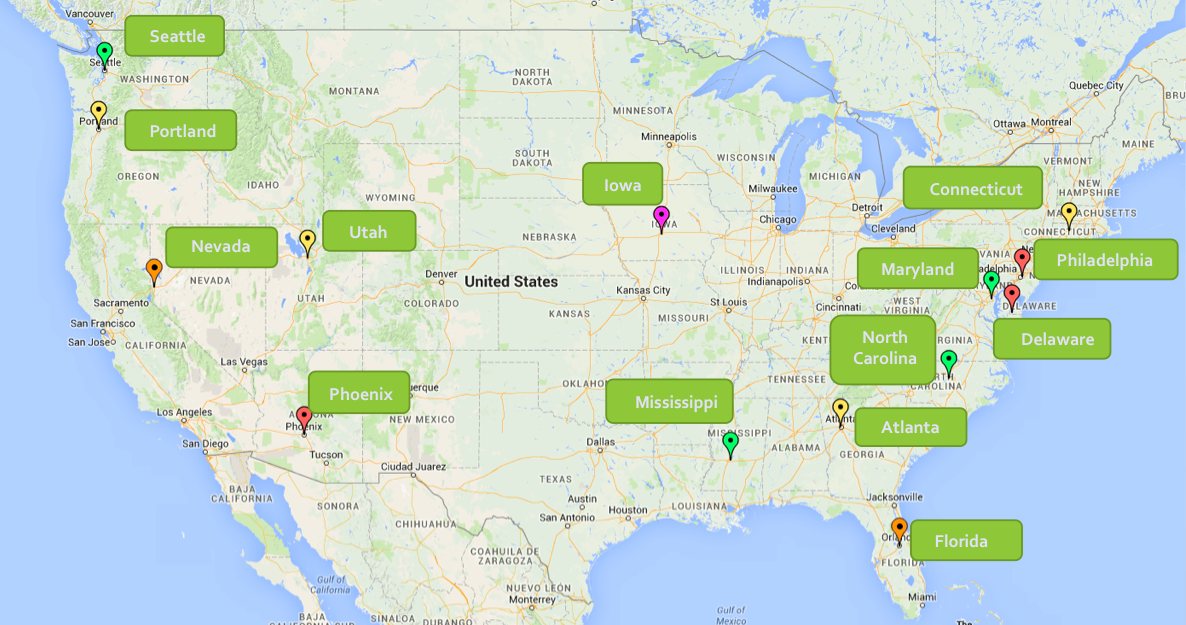This repository maintains the source code and the Windows-based release for DTALite+NeXTA package. DTALite is an open-source Analysis, Modeling, and Simulation (AMS) library for efficiently macroscopic and mesoscopic traffic assignment based on General Modeling Network Specification (GMNS) format. NeXTA is developed through the support of a FHWA study as a visualization tool for transportation AMS.
- DTALite+NeXTA package
- Self-learning documents
- User guide for NeXTA+QGIS using GMNS data format
- See Path4GMNS for the Python implementation of DTALite along with the Python APIs to the portable DTALite running across Windows (x86_64), Linux (x86_64), and macOS (x86_64 and Apple Silicon).
- See TransOMS for the complete redesign and the enterprise-grade implementation of DTALite using Modern C++.
1. White Paper and Application
Zhou, X., & Taylor, J. (2014). DTALite: A queue-based mesoscopic traffic simulator for fast model evaluation and calibration. Cogent Engineering 1.1, 961345.
Marshall, N.L. (2018). Forecasting the impossible: The status quo of estimating traffic flows with static traffic assignment and the future of dynamic traffic assignment. Research in Transportation Business & Management 29, 85-92.
2. NeXTA/DTALite Workshop Webinar
3. Mini-Lesson on the Algorithmic Details
What is the best way to learn dynamic traffic simulation and network assignment for a beginner? Do you want to integrate a powerful traffic simulator in your deep learning framework? We would like to offer a collaborative learning experience through 500 lines of Python codes and real-life data sets. This is part of our mini-lessons through teaching dialog.
4. Parallel Computing Algorithms
Qu, Y., & Zhou, X. (2017). Large-scale dynamic transportation network simulation: A space-time-event parallel computing approach. Transportation Research Part C: Emerging technologies, 75, 1-16.
5. OD Demand Estimation
Lu, C. C., Zhou, X., & Zhang, K. (2013). Dynamic origin–destination demand flow estimation under congested traffic conditions.Transportation Research Part C: Emerging Technologies, 34, 16-37.
6. Simplified Emission Estimation Model
Zhou, X., Tanvir, S., Lei, H., Taylor, J., Liu, B., Rouphail, N. M., & Frey, H. C. (2015). Integrating a simplified emission estimation model and mesoscopic dynamic traffic simulator to efficiently evaluate emission impacts of traffic management strategies.Transportation Research Part D: Transport and Environment, 37, 123-136.
7. Eco-system Optimal Time-dependent Flow Assignment
Lu, C. C., Liu, J., Qu, Y., Peeta, S., Rouphail, N. M., & Zhou, X. (2016). Eco-system optimal time-dependent flow assignment in a congested network. Transportation Research Part B: Methodological, 94, 217-239.
8. Transportation-induced Population Exposure Assessment
Vallamsundar, S., Lin, J., Konduri, K., Zhou, X., & Pendyala, R. M. (2016). A comprehensive modeling framework for transportation-induced population exposure assessment. Transportation Research Part D: Transport and Environment, 46, 94-113.
9. Integrated ABM and DTA
Xiong, C., Shahabi, M., Zhao, J., Yin, Y., Zhou, X., & Zhang, L. (2020). An integrated and personalized traveler information and incentive scheme for energy efficient mobility systems. Transportation Research Part C: Emerging Technologies, 113, 57-73.
10. State-wide Transportation Modeling
Zhang, L. (2017). Maryland SHRP2 C10 Implementation Assistance – MITAMS: Maryland Integrated Analysis Modeling System, Maryland State Highway Administration.
11. Workzone Applications
Schroeder, B, et al. (2014). Work zone traffic analysis & impact assessment. FHWA/NC/2012-36. North Carolina. Dept. of Transportation. Research and Analysis Group.


